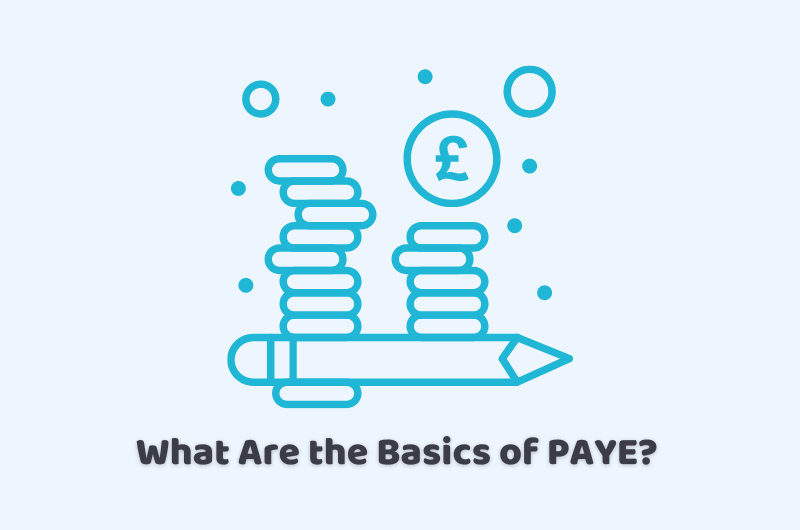
Are you looking for the basics of PAYE? PAYE, or Pay As You Earn, is the system used to collect income tax and National Insurance Contributions (NICs) from your employees’ wages. From registering with HMRC to deducting tax and NICs, submitting returns, and keeping accurate records, we’ll cover it all.
We’ll take it one step at a time, and before you know it, you’ll be a PAYE pro. Whether you’re a small business owner, a startup founder, or an HR manager, this discussion is designed to help you understand the fundamentals of PAYE and set you up for success.
Get in touch with our young, clever, and tech-driven professionals if you want to choose the best guide on the basics of PAYE.
What Are the Basics of PAYE?
PAYE is the system used in the UK to collect income tax and National Insurance Contributions (NICs) from employees’ wages and salaries. The basics of PAYE are straightforward: when you start a new job, your employer will ask you for your tax code. Your NIC payments will depend on your earnings level and National Insurance category.
Who Needs to Pay PAYE?
If you’re an employee working in the UK, you’ll likely need to pay PAYE. This includes:
- Full-time and part-time workers
- Temporary and contract workers
- Apprentices and trainees
- Company directors (in some cases)
Types of Income Subject to PAYE
PAYE applies to various types of income, including:
- Wages and salaries
- Bonuses and commissions
- Overtime pay
- Holiday pay
- Sick pay
- Maternity and paternity pay
Employers also have PAYE responsibilities, including:
- Operating a PAYE scheme
- Deducting tax and NICs from employees’ pay
- Paying tax and NICs to HMRC
- Providing employees with a P60 which is an end-of-year tax certificate
Other individuals may need to pay PAYE, such as:
- Self-employed individuals with employees
- Business owners with company directors’ income
- Individuals receiving taxable benefits or expenses
How is PAYE Calculated?
Here is how PAYE is calculated.
Step 1: Determine Your Tax Code
Your tax code is a combination of letters and numbers that tells your employer how much tax-free income you’re allowed. HMRC will provide you with a tax code based on your circumstances.
Step 2: Calculate Your Taxable Income
Your employer will calculate your taxable income by adding up all your earnings, including wages, bonuses, and benefits.
Step 3: Apply the Tax Rates
Your employer will then apply the relevant tax rates to your taxable income, using the following bands:
- Basic rate (20%): £12,571 – £50,270
- Higher rate (40%): £50,271 – £125,140
- Additional rate (45%): Above £125,140
Step 4: Deduct Tax-Free Allowances
Your employer will deduct any tax-free allowances, such as the personal allowance.
Step 5: Calculate National Insurance Contributions (NICs)
Your employer will also calculate your NICs.
Step 6: Deduct Tax and NICs
Your employer will deduct the calculated tax and NICs from your pay.
Step 7: Pay Tax and NICs to HMRC
Your employer will pay the deducted tax and NICs to HMRC on your behalf.
PAYE and New Employers
Employers operate PAYE by:
- Setting up a PAYE Scheme: Employers must set up a PAYE scheme with HMRC.
- Processing Payroll: Employers must process payroll, including calculating tax and NIC deductions.
- Submitting PAYE Returns: Employers must submit PAYE returns to HMRC, including P60s and P35s.
- Keeping PAYE Records: Employers must keep accurate PAYE records, including employee tax codes and deductions.
Employers who fail to operate PAYE correctly may face:
- Penalties and Fines: HMRC may impose penalties and fines for non-compliance.
- Interest on Unpaid Tax: Employers may be charged interest on unpaid tax.
- Legal Action: HMRC may take legal action against employers in extreme cases.
The Bottom Line
In conclusion, as a new employer in the UK, understanding the basics of PAYE is crucial to ensure you meet your legal obligations and avoid penalties and fines. PAYE is a vital system that helps collect income tax and National Insurance Contributions (NICs) from employees’ wages. Employers play a significant role in operating it. By registering with HMRC, and obtaining employees’ tax codes, you can ensure you comply with PAYE regulations.
Accurate record-keeping and timely submissions are essential to avoid errors and penalties. Don’t hesitate to seek guidance from HMRC or a payroll professional if you’re unsure about any aspect of PAYE. By mastering the basics of PAYE, you’ll be able to manage your employees’ pay efficiently and maintain a smooth and compliant payroll process.
Reach out to our intelligent and clever-minded guys to get the answer to your queries in the UK, we will get to your answers quickly.
Disclaimer: The general information provided in this blog about how to manage receipts for tax in the UK includes text and graphics. It does not intend to disregard any of the professional advice in the future as well.
